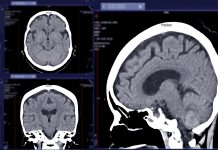Dhivya Venkat, CEO & Co-Founder of Esya Inc., discusses the urgent need for integrating innovative diagnostics and therapies into the NHS in order to improve dementia care and diagnosis
Dementia remains one of the most critical public health challenges in the UK, affecting over 982,000 people and costing the economy approximately £42bn annually (1). It is projected that by 2040, the number of people living with dementia in the UK will increase to 1.6 million. Conditions such as Alzheimer’s disease (AD), vascular dementia, dementia with Lewy bodies, and frontotemporal dementia are the major types, with Alzheimer’s accounting for 60-70% of all cases (1).
Despite significant advancements in understanding the pathophysiology of dementia, especially Alzheimer’s disease, the UK lags in adopting state-of-the-art diagnostic tools and therapies. Integrating these advancements into the National Health Service (NHS) presents considerable challenges. This article looks into the current state of dementia care in the UK – focusing on AD, the importance of non-invasive diagnostics, comparisons with European practices, initiatives aimed at bridging existing gaps, and the evolving therapeutic landscape. Furthermore, it provides recommendations on the policy changes needed to embed this into the NHS.
What is the current standard of dementia care in the UK?
In the UK, dementia care typically begins with General Practitioners (GPs), who serve as the initial point of contact.
GPs conduct preliminary assessments using tools such as the General Practitioner Assessment of Cognition (GPCOG) or the Mini-Mental State Examination (MMSE) (2). If signs of cognitive decline are evident, patients are referred to memory clinics or specialist services for comprehensive evaluations, including blood tests and neuroimaging (MRI or CT scans) to rule out other conditions (2).
A dementia diagnosis is confirmed through clinical assessments, cognitive testing, and imaging results, often diagnosing Alzheimer’s disease by excluding other potential causes (2).
Treatment primarily involves cholinesterase inhibitors such as Donepezil, Rivastigmine, and Galantamine, as well as NMDA receptor antagonists like Memantine (3,4). These drugs, developed mainly for Alzheimer’s, offer temporary symptom relief but do not address the underlying disease process. Additionally, psychological support, cognitive rehabilitation, treatment for underlying conditions (e.g., diabetes, high blood pressure), lifestyle modifications, and support services for carers and patients (e.g., dementia cafes and support groups) play a crucial role in managing the disease (3).
The Importance of diagnostics
Accurate and early diagnosis is crucial for managing dementia effectively. Early detection allows for timely intervention, potentially slowing disease progression and improving quality of life (5). It also facilitates better planning and support for patients and their families. Improved diagnostic protocols, such as blood-based screening tests, advanced imaging techniques, and biomarker testing, can significantly enhance early detection capabilities (6).
Consider Sarah, a 70-year-old woman experiencing mild memory lapses. Early diagnostic tools identified biomarkers indicative of early Alzheimer’s, enabling her to begin treatment and embed lifestyle changes such as improved diet and regular cognitive exercises that improved her quality of life.
European contrast: Implementing CSF biomarkers
Several European countries have successfully integrated cerebrospinal fluid (CSF) biomarkers for earlier and more accurate Alzheimer’s diagnosis (5). These biomarkers, which measure levels of amyloid-beta and tau proteins, can detect Alzheimer’s disease before significant cognitive decline occurs. This early diagnosis enables timely therapeutic intervention, which is crucial for the effectiveness of anti-amyloid therapies (5).
For instance, in Sweden, the integration of CSF biomarkers into routine clinical practice has allowed for earlier and more accurate diagnosis of Alzheimer’s disease, enabling patients to start treatments sooner and plan their future care more effectively (7). This model of integrating biomarkers into diagnostic protocols highlights the benefits of adopting such practices to improve early detection and patient outcomes (5).
We are addressing health equity gaps with initiatives like the Postcode Lottery
The UK’s commitment to improving dementia care is being bolstered by a significant initiative aimed at enhancing early diagnosis across the country. With the support of a £5 million grant from the People’s Postcode Lottery, Alzheimer’s Research UK and Alzheimer’s Society are spearheading a transformative project. This project aims to implement a simple, cost-effective blood test within the NHS to detect Alzheimer’s disease at its earliest stages, (8) potentially incorporating biomarkers like pTau 217. This effort is set to bridge health equity gaps, ensuring that cutting-edge diagnostic tools are accessible to all, regardless of regional location. In addition, the UK Dementia mission brings together various stakeholders, including charities, investors, industry, researchers, and people affected by dementia, to accelerate efforts in tackling the disease.
The promise of FDA-approved anti-amyloid therapies
Recent FDA (Food and Drug Administration)-approved anti-amyloid therapies offer significant hope in treating Alzheimer’s by targeting and clearing beta-amyloid plaques, a hallmark of the disease. (9) These therapies include monoclonal antibodies such as aducanumab (Aduhelm), lecanemab (Leqembi), and donanemab (Kisunla).
Aducanumab (Aduhelm) was approved by the FDA in 2021 and targets amyloid-beta plaques, although its effectiveness in slowing cognitive decline remains debated (10). Lecanemab (Leqembi), initially granted accelerated approval in 2023 and later converted to traditional approval based on confirmatory clinical trials, has shown a significant reduction in amyloid plaques and a clinically meaningful impact on cognitive decline (9). Donanemab (Kisunla), approved in 2024, also targets amyloid plaques and has demonstrated a statistically significant reduction in clinical decline in patients with early Alzheimer’s disease. It is administered as an intravenous infusion every four weeks (11). These therapies signify a breakthrough in Alzheimer’s treatment.
Streamlining novel diagnostics and anti-amyloid therapy into the NHS
To effectively integrate novel diagnostics and therapies, the NHS faces several challenges. Firstly, the NHS must navigate complex approval processes and enhance its infrastructure to diagnose Alzheimer’s disease (AD) earlier, monitor the disease, and administer these treatments, which require specialised facilities and trained personnel (12). Improved diagnostics are essential for early detection, which can significantly improve treatment outcomes. Secondly, the high cost of anti-amyloid therapies poses a significant barrier to their widespread adoption within a publicly funded system like the NHS (12, 13). Strategic financial planning and investment in both diagnostics and treatment infrastructure are crucial to overcoming these obstacles (12).
Policy changes needed
To facilitate the integration of advanced diagnostics and novel therapeutics, several policy changes are necessary. Firstly, increased funding for dementia research and treatment infrastructure is essential, including investments in diagnostic technologies, specialised treatment centres, and training for healthcare professionals (12, 14). Secondly, policies must ensure uniform access to diagnostics and treatments across the UK to ensure all patients receive timely and effective care (14). Lastly, streamlined regulatory processes for the approval and implementation of new therapies and diagnostics are needed to enable faster adoption of innovative treatments.
The UK stands at a critical juncture in dementia care. By adopting FDA approved anti-amyloid therapies and embracing innovative diagnostic tools, the NHS can transform its approach to dementia, making it both more effective and equitable. This requires a committed policy overhaul, significant healthcare investments, and a strategic approach to healthcare funding. As such, the UK can ensure no citizen is left behind in accessing these potentially life-altering treatments.
CLICK HERE for references

This work is licensed under Creative Commons Attribution-NonCommercial-NoDerivatives 4.0 International.








